This time I will bring you how to use the Installation plug-in in actual projects, and what are the precautions for using the Installation plug-in in actual projects. The following is a practical case, let's take a look.
This plugin is used to simplify the creation of HTML files that serve webpack bundles, especially when the file name contains a hash value, and this value changes every time it is compiled. You can either let this plugin help you automatically generate HTML files, use lodash templates to load the generated bundles, or load the bundles yourself.
How to use the Installation plug-in in actual projects
Use npm to install this plug-in
$ npm install html-webpack-plugin@2 --save-dev
Basic Usage
This plugin can help generate HTML files. In the body element, use script to include all your webpack bundles. Just configure the following in your webpack configuration file:
var HtmlWebpackPlugin = require('html-webpack-plugin')
var webpackConfig = {
entry: 'index.js',
output: {
path: 'dist',
filename: 'index_bundle.js'
},
plugins: [new HtmlWebpackPlugin()]
}
This will automatically be included in dist A file named index.html is generated in the directory with the following content:
nbsp;html> <meta> <title>Webpack App</title> <script></script>
If you have multiple webpack entry points, they will all be included in the generated script element.
If there are any CSS resources included in the webpack output (for example, css extracted using ExtractTextPlugin), these will be included in the head element of the HTML page using links.
Configuration
A series of configurations can be performed, supporting the following configuration information
title: used to generate pages title element
filename: The name of the output HTML file. The default is index.html. It can also be directly configured with a subdirectory.
template: Template file path, supports loader, such as html!./index.html
inject: true | 'head' | 'body' | false , inject all resources into a specific template or templateContent. If set to true or body, all javascript resources will be placed at the bottom of the body element, and 'head' will be placed in the head element.
favicon: Add specific favicon path to the output HTML file.
minify: {} | false, pass html-minifier option to minify output
hash: true | false, if true, will Adds a unique webpack build hash to all included scripts and CSS files, useful for uncaching.
cache: true | false, if true, this is the default value and the file will only be published after the file is modified.
showErrors: true | false, if true, this is the default value and the error message will be written to the HTML page
chunks: Allows adding only certain chunks (for example, only unit test chunks)
chunksSortMode: Allows to control how chunks are sorted before being added to the page, supported values: 'none' | 'default ' | {function}-default:'auto'
excludeChunks: Allows skipping certain chunks (for example, skipping unit test chunks)
The following examples demonstrate how to use these configurations.
{
entry: 'index.js',
output: {
path: 'dist',
filename: 'index_bundle.js',
hash: true
},
plugins: [
new HtmlWebpackPlugin({
title: 'My App',
filename: 'assets/admin.html'
})
]
}
Generate multiple HTML files
Generate multiple HTML files by adding this plug-in multiple times in the configuration file.
{
entry: 'index.js',
output: {
path: 'dist',
filename: 'index_bundle.js'
},
plugins: [
new HtmlWebpackPlugin(), // Generates default index.html
new HtmlWebpackPlugin({ // Also generate a test.html
filename: 'test.html',
template: 'src/assets/test.html'
})
]
}
Write a custom template
If the default generated HTML file does not suit your needs, you can create your own custom template. A convenient way is to pass the inject option and then pass it to a custom HTML file. html-webpack-plugin will automatically inject all required CSS, js, manifest and favicon files into the markup.
plugins: [
new HtmlWebpackPlugin({
title: 'Custom template',
template: 'my-index.html', // Load a custom template
inject: 'body' // Inject all scripts into the body
})
]
my-index.html file
nbsp;html> <meta> <title></title>
If you have a template loader, you can use it to parse this template.
module: {
loaders: [
{ test: /\.hbs$/, loader: "handlebars" }
]
},
plugins: [
new HtmlWebpackPlugin({
title: 'Custom template using Handlebars',
template: 'my-index.hbs',
inject: 'body'
})
]
Also, if your pattern is a string, you can pass it using templateContent.
plugins: [
new HtmlWebpackPlugin({
inject: true,
templateContent: templateContentString
})
]
If the inject feature doesn't suit your needs, you want full control over resource placement. You can use lodash syntax directly, using default template as a starting point to create your own template.
The templateContent option can also be a function to use other languages, such as jade:
plugins: [
new HtmlWebpackPlugin({
templateContent: function(templateParams, compilation) {
// Return your template content synchronously here
return '..';
}
})
]
or the asynchronous version
plugins: [
new HtmlWebpackPlugin({
templateContent: function(templateParams, compilation, callback) {
// Return your template content asynchronously here
callback(null, '..');
}
})
]
Note that if template and templateContent are used at the same time, the plugin will Throw an error.
变量 o 在模板中是在渲染时传递进来的数据,这个变量有如下的属性:
1、htmlWebpackPlugin: 这个插件的相关数据 ◦
htmlWebpackPlugin.files: 资源的块名,来自 webpack 的 stats 对象,包含来自 entry 的从 entry point name 到 bundle 文件名映射。
"htmlWebpackPlugin": {
"files": {
"css": [ "main.css" ],
"js": [ "assets/head_bundle.js", "assets/main_bundle.js"],
"chunks": {
"head": {
"entry": "assets/head_bundle.js",
"css": [ "main.css" ]
},
"main": {
"entry": "assets/main_bundle.js",
"css": []
},
}
}
}
如果在 webpack 配置文件中,你配置了 publicPath,将会反射正确的资源
htmlWebpackPlugin.options: 传递给插件的配置。
2、webpack: webpack 的 stats 对象。
3、webpackConfig: webpack 配置信息。
过滤块
可以使用 chunks 来限定特定的块。
plugins: [
new HtmlWebpackPlugin({
chunks: ['app']
})
]
还可以使用 excludeChunks 来排除特定块。
plugins: [
new HtmlWebpackPlugin({
excludeChunks: ['dev-helper']
})
]
事件
通过事件允许其它插件来扩展 HTML。
html-webpack-plugin-before-html-processing
html-webpack-plugin-after-html-processing
html-webpack-plugin-after-emit
使用方式:
compilation.plugin('html-webpack-plugin-before-html-processing', function(htmlPluginData, callback) {
htmlPluginData.html += 'The magic footer';
callback();
});
相信看了本文案例你已经掌握了方法,更多精彩请关注php中文网其它相关文章!
推荐阅读:
The above is the detailed content of How to use the Installation plug-in in practical projects. For more information, please follow other related articles on the PHP Chinese website!
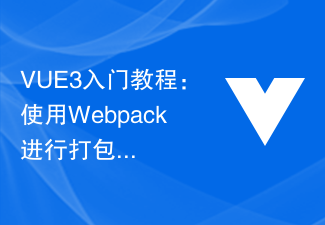 VUE3入门教程:使用Webpack进行打包和构建Jun 15, 2023 pm 06:17 PM
VUE3入门教程:使用Webpack进行打包和构建Jun 15, 2023 pm 06:17 PMVue是一款优秀的JavaScript框架,它可以帮助我们快速构建交互性强、高效性好的Web应用程序。Vue3是Vue的最新版本,它引入了很多新的特性和功能。Webpack是目前最流行的JavaScript模块打包器和构建工具之一,它可以帮助我们管理项目中的各种资源。本文就为大家介绍如何使用Webpack打包和构建Vue3应用程序。1.安装Webpack
 vite和webpack的区别是什么Jan 11, 2023 pm 02:55 PM
vite和webpack的区别是什么Jan 11, 2023 pm 02:55 PM区别:1、webpack服务器启动速度比vite慢;由于vite启动的时候不需要打包,也就无需分析模块依赖、编译,所以启动速度非常快。2、vite热更新比webpack快;vite在HRM方面,当某个模块内容改变时,让浏览器去重新请求该模块即可。3、vite用esbuild预构建依赖,而webpack基于node。4、vite的生态不及webpack,加载器、插件不够丰富。
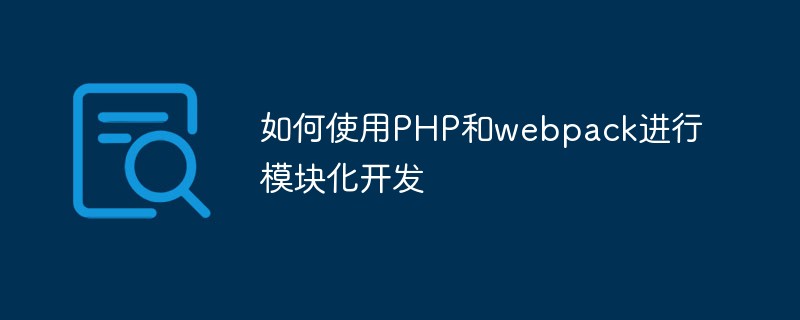 如何使用PHP和webpack进行模块化开发May 11, 2023 pm 03:52 PM
如何使用PHP和webpack进行模块化开发May 11, 2023 pm 03:52 PM随着Web开发技术的不断发展,前后端分离、模块化开发已经成为了一个广泛的趋势。PHP作为一种常用的后端语言,在进行模块化开发时,我们需要借助一些工具来实现模块的管理和打包,其中webpack是一个非常好用的模块化打包工具。本文将介绍如何使用PHP和webpack进行模块化开发。一、什么是模块化开发模块化开发是指将程序分解成不同的独立模块,每个模块都有自己的作
 webpack怎么将es6转成es5的模块Oct 18, 2022 pm 03:48 PM
webpack怎么将es6转成es5的模块Oct 18, 2022 pm 03:48 PM配置方法:1、用导入的方法把ES6代码放到打包的js代码文件中;2、利用npm工具安装babel-loader工具,语法“npm install -D babel-loader @babel/core @babel/preset-env”;3、创建babel工具的配置文件“.babelrc”并设定转码规则;4、在webpack.config.js文件中配置打包规则即可。
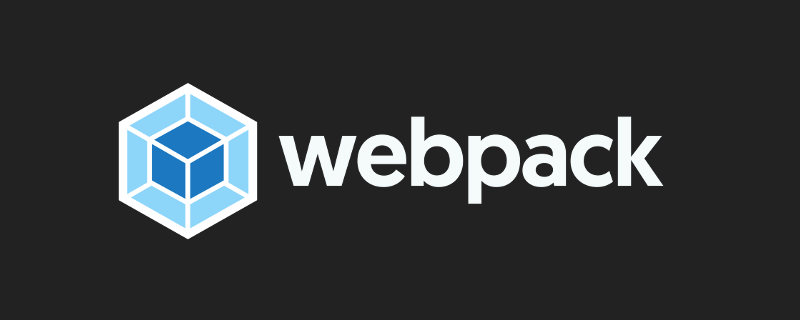 Webpack是什么?详解它是如何工作的?Oct 13, 2022 pm 07:36 PM
Webpack是什么?详解它是如何工作的?Oct 13, 2022 pm 07:36 PMWebpack是一款模块打包工具。它为不同的依赖创建模块,将其整体打包成可管理的输出文件。这一点对于单页面应用(如今Web应用的事实标准)来说特别有用。
 vue webpack可打包哪些文件Dec 20, 2022 pm 07:44 PM
vue webpack可打包哪些文件Dec 20, 2022 pm 07:44 PM在vue中,webpack可以将js、css、图片、json等文件打包为合适的格式,以供浏览器使用;在webpack中js、css、图片、json等文件类型都可以被当做模块来使用。webpack中各种模块资源可打包合并成一个或多个包,并且在打包的过程中,可以对资源进行处理,如压缩图片、将scss转成css、将ES6语法转成ES5等可以被html识别的文件类型。
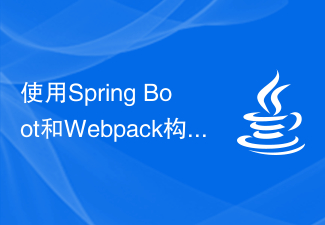 使用Spring Boot和Webpack构建前端工程和插件系统Jun 22, 2023 am 09:13 AM
使用Spring Boot和Webpack构建前端工程和插件系统Jun 22, 2023 am 09:13 AM随着现代Web应用程序的复杂性不断增加,构建优秀的前端工程和插件系统变得越来越重要。随着SpringBoot和Webpack的流行,它们成为了一个构建前端工程和插件系统的完美组合。SpringBoot是一个Java框架,它以最小的配置要求来创建Java应用程序。它提供了很多有用的功能,比如自动配置,使开发人员可以更快、更容易地搭建和部署Web应用程序。W
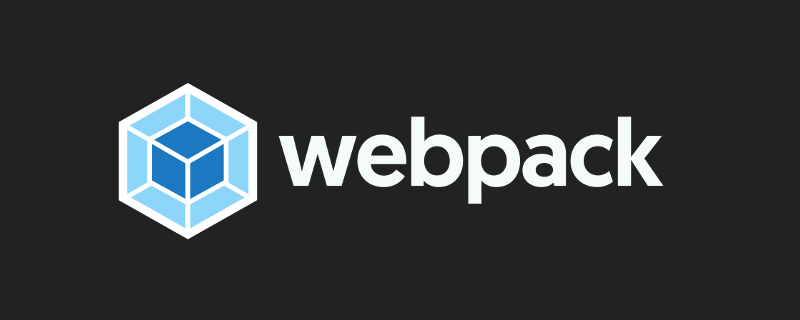 vue中的webpack用什么安装Jul 25, 2022 pm 03:27 PM
vue中的webpack用什么安装Jul 25, 2022 pm 03:27 PMvue中的webpack用node包管理器“npm”或npm镜像“cnpm”来安装。webpack是一个用于现代JavaScript应用程序的静态模块打包工具,是基于node.js开发的,使用时需要有node.js组件支持;需要使用npm或者cnpm进行安装,语法“npm install webpack -g”或“cnpm install webpack -g”。


Hot AI Tools

Undresser.AI Undress
AI-powered app for creating realistic nude photos

AI Clothes Remover
Online AI tool for removing clothes from photos.

Undress AI Tool
Undress images for free

Clothoff.io
AI clothes remover

AI Hentai Generator
Generate AI Hentai for free.

Hot Article

Hot Tools

Dreamweaver Mac version
Visual web development tools

mPDF
mPDF is a PHP library that can generate PDF files from UTF-8 encoded HTML. The original author, Ian Back, wrote mPDF to output PDF files "on the fly" from his website and handle different languages. It is slower than original scripts like HTML2FPDF and produces larger files when using Unicode fonts, but supports CSS styles etc. and has a lot of enhancements. Supports almost all languages, including RTL (Arabic and Hebrew) and CJK (Chinese, Japanese and Korean). Supports nested block-level elements (such as P, DIV),

PhpStorm Mac version
The latest (2018.2.1) professional PHP integrated development tool

SublimeText3 Chinese version
Chinese version, very easy to use

MinGW - Minimalist GNU for Windows
This project is in the process of being migrated to osdn.net/projects/mingw, you can continue to follow us there. MinGW: A native Windows port of the GNU Compiler Collection (GCC), freely distributable import libraries and header files for building native Windows applications; includes extensions to the MSVC runtime to support C99 functionality. All MinGW software can run on 64-bit Windows platforms.






